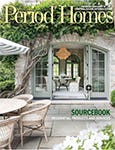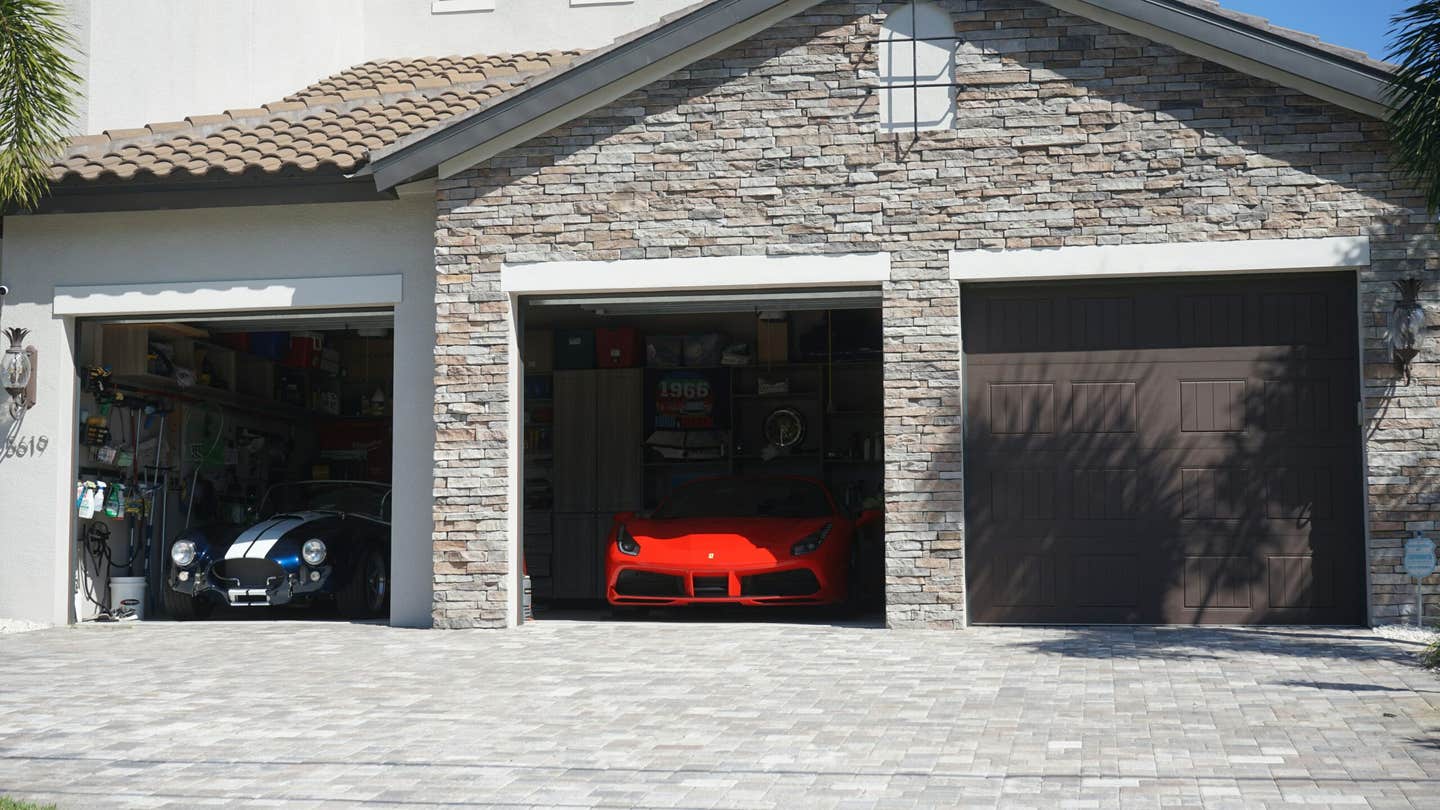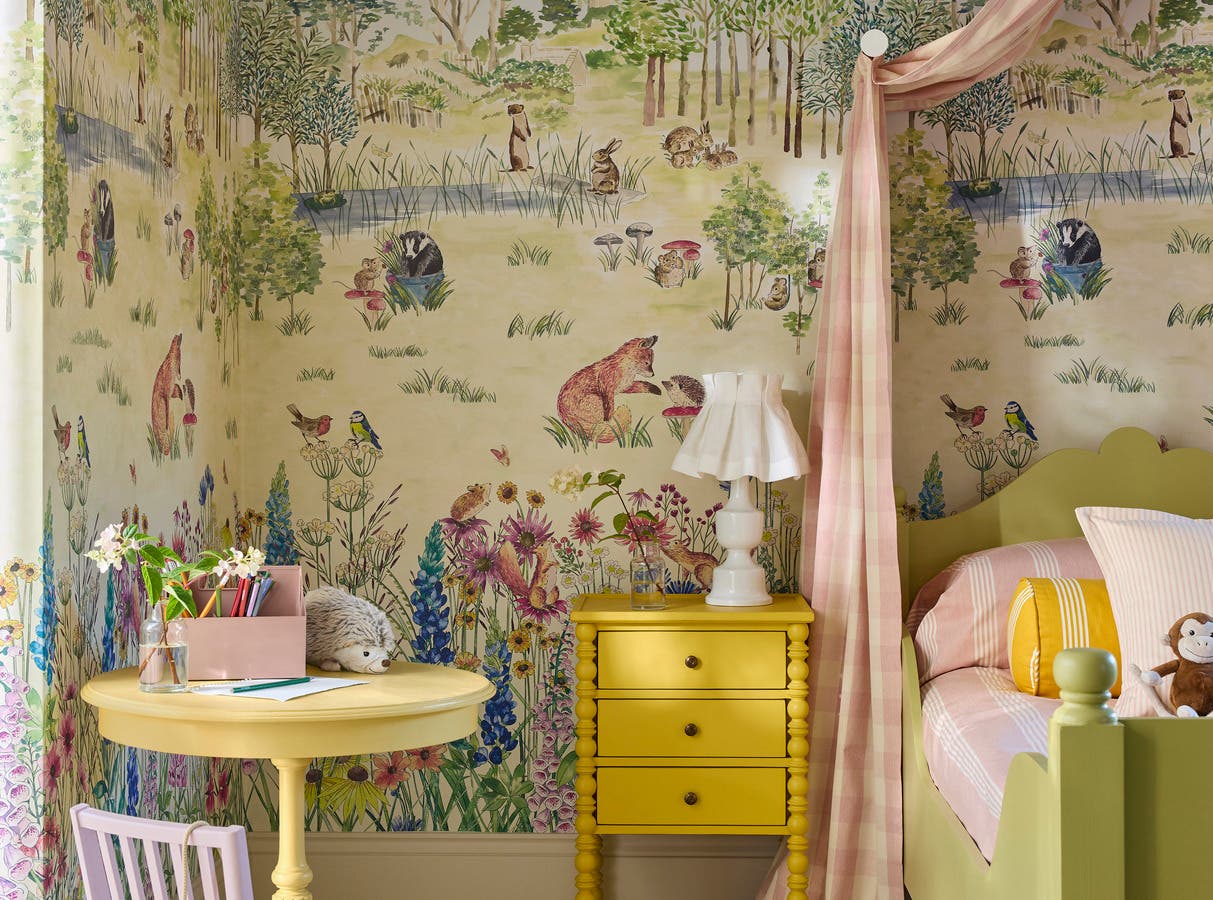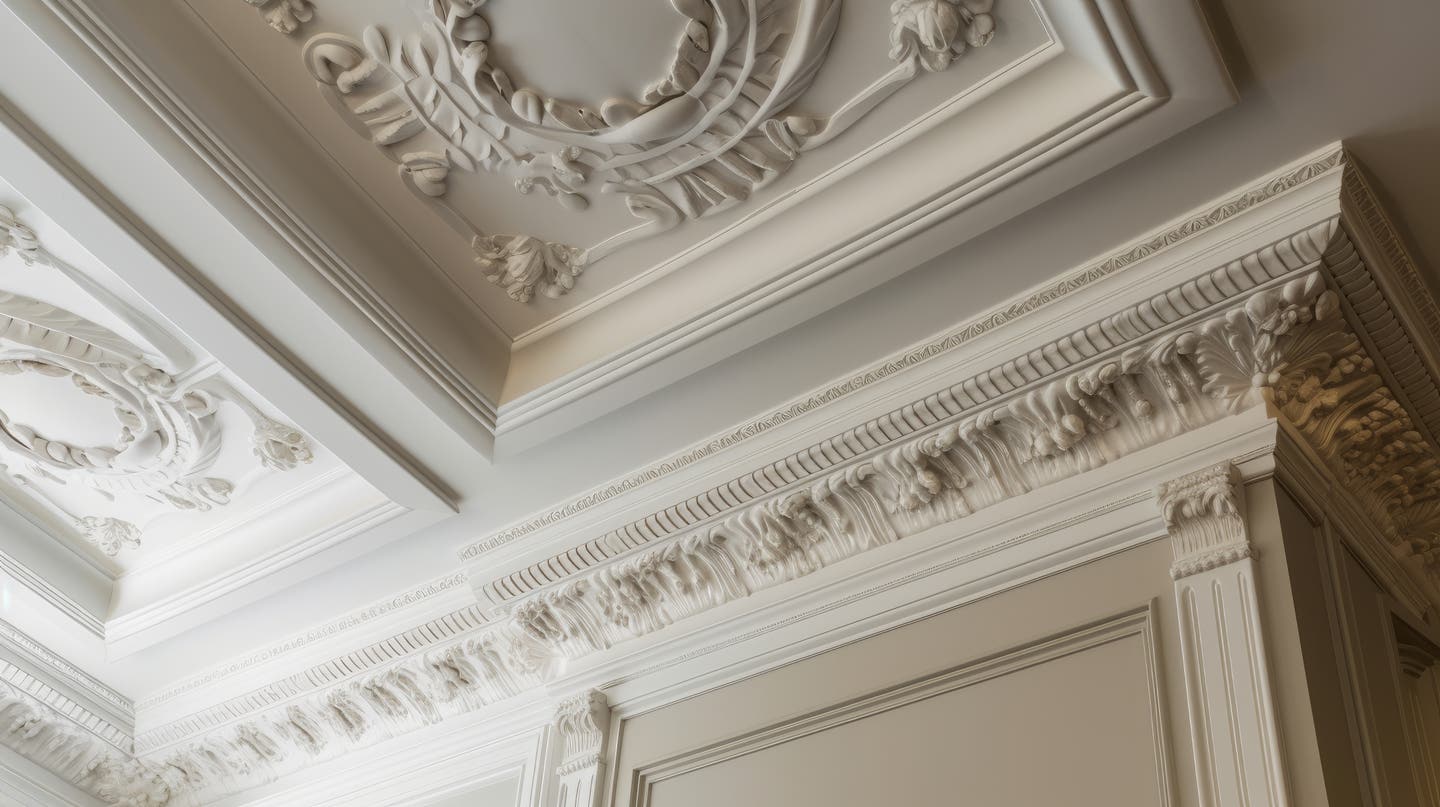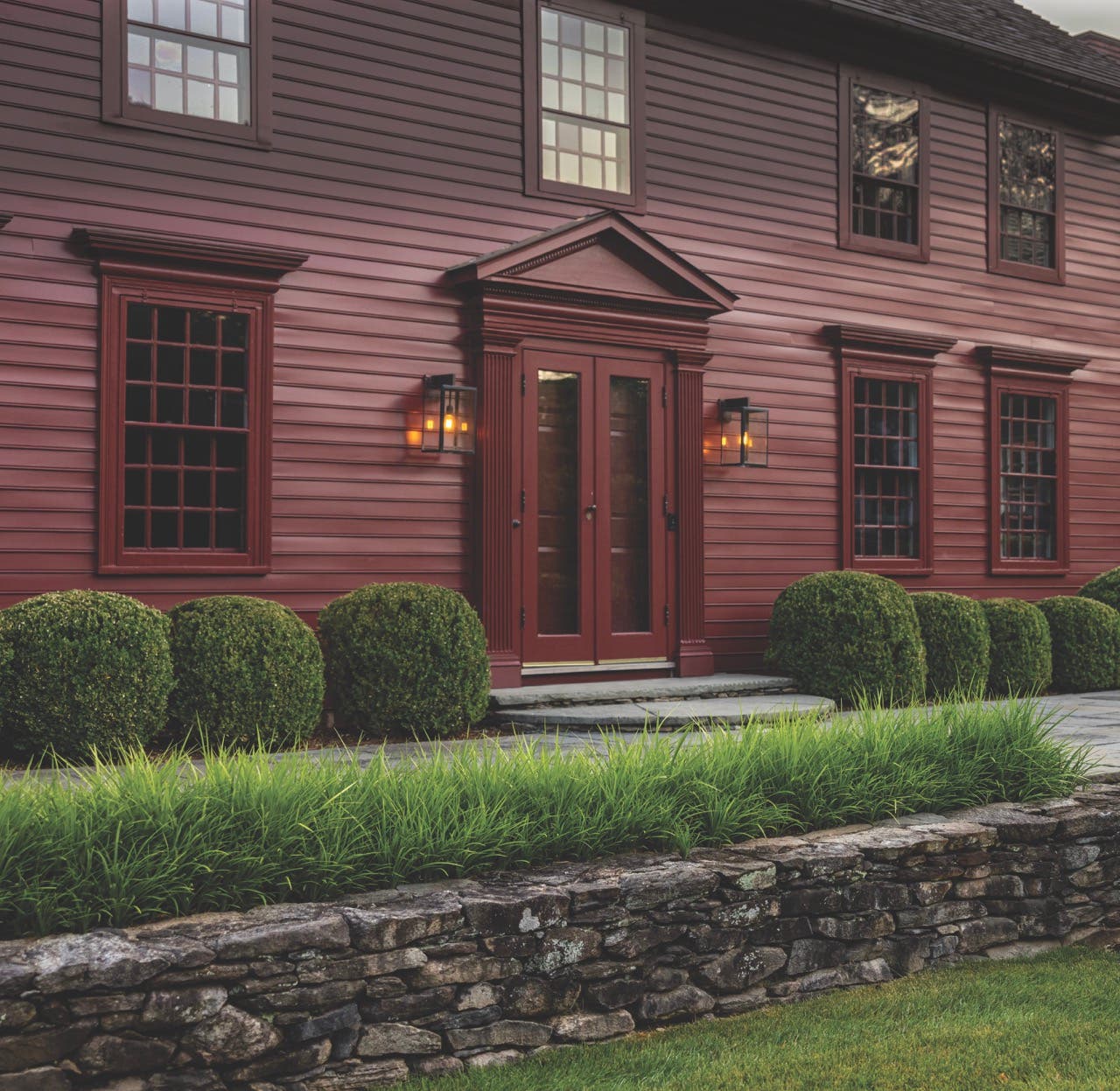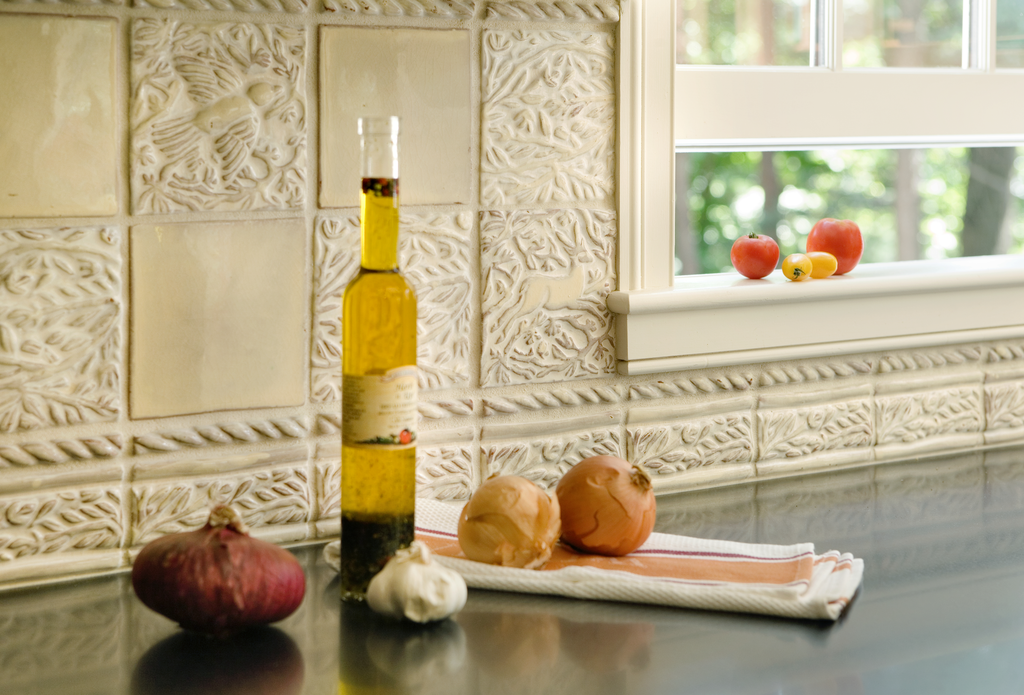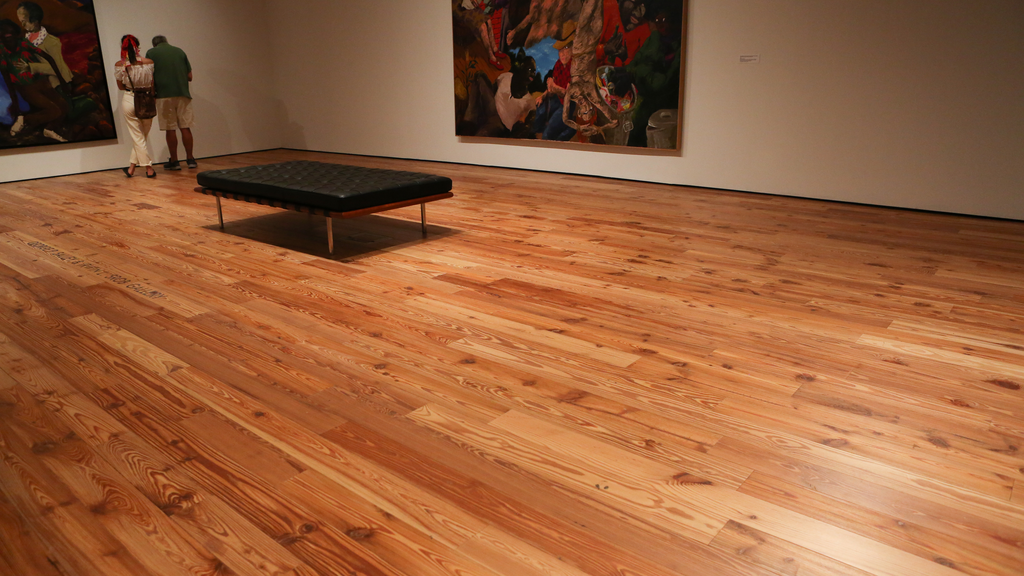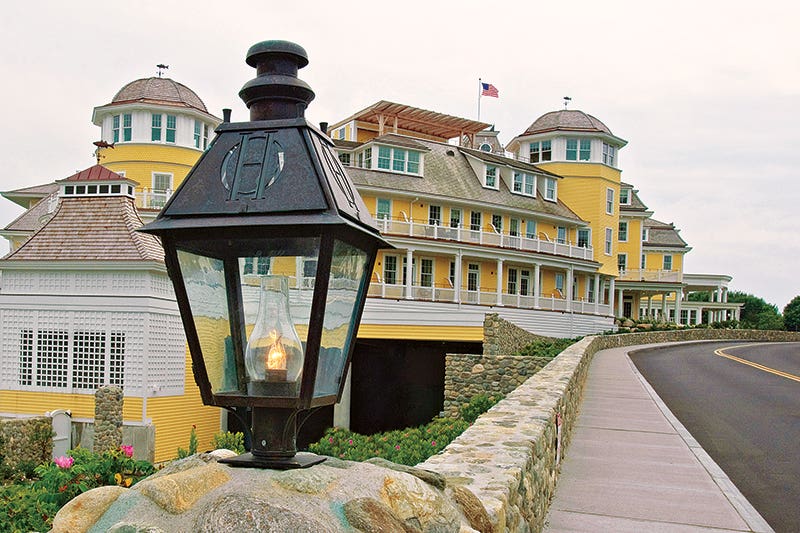
Product Reports
Colonial Lighting Fixtures: The Iconic Colonial
Electric light, with its near-freedom from the threats of heat, open flame, wind, and exhaust, has been illuminating houses for over 120 years, yet the most popular exterior fixtures—whether for houses new or old—invariably evoke the pre-electric era, most iconically Colonial. With features and forms that are at best vestigial—sometimes even an impediment to optimum light—what’s so cool about Colonial? It’s got to be more than nostalgia for a dimly lit time or the romance of a dangerous, flammable past, as some experts explain.
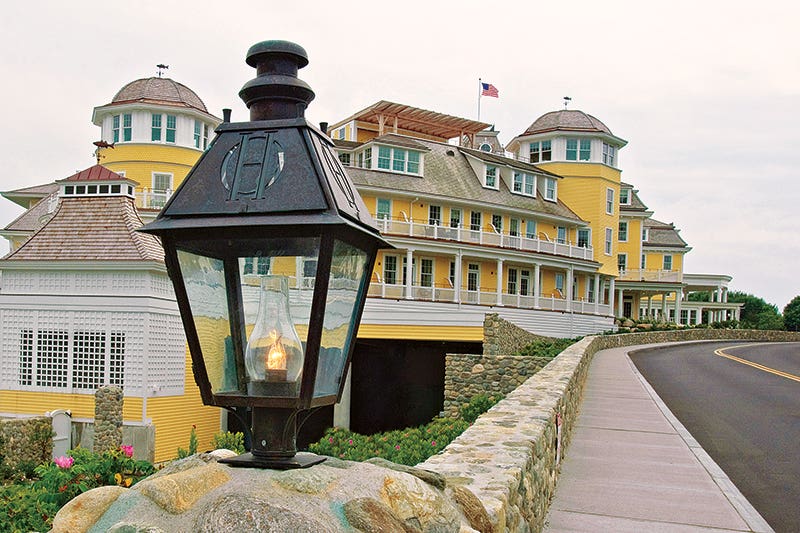
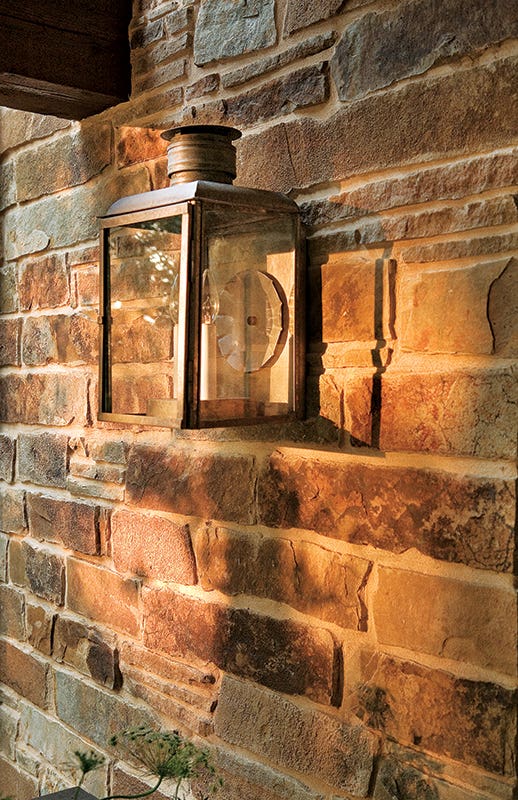
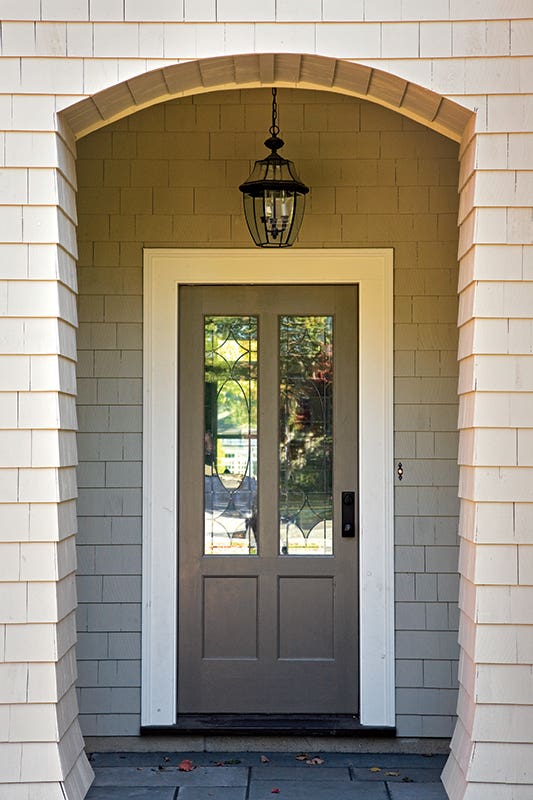
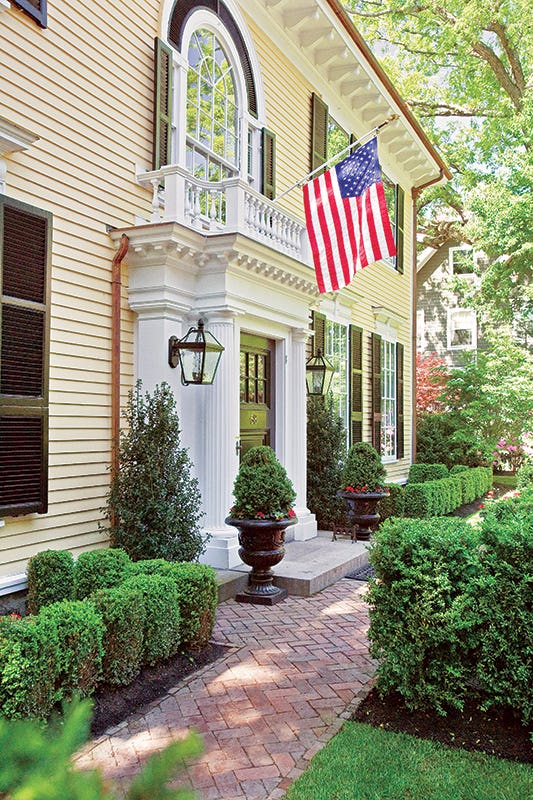
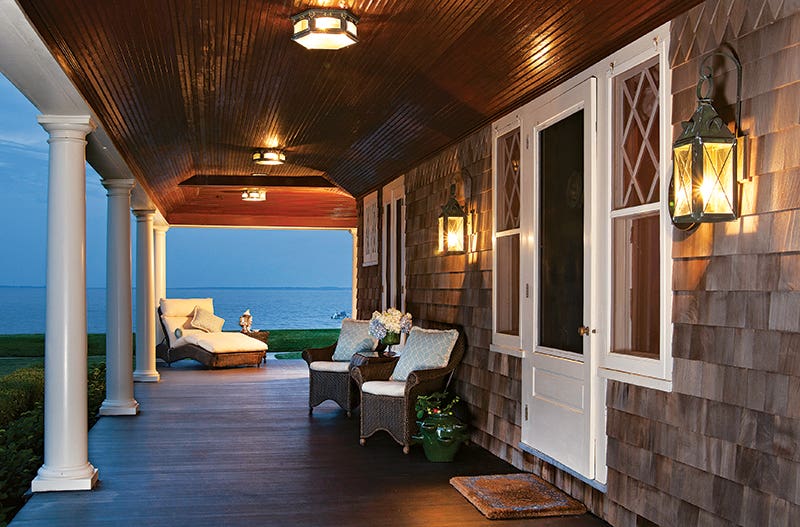
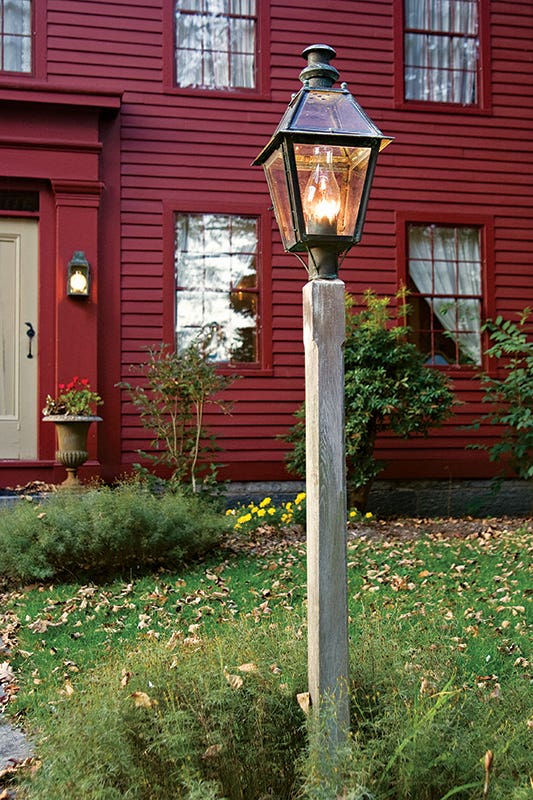
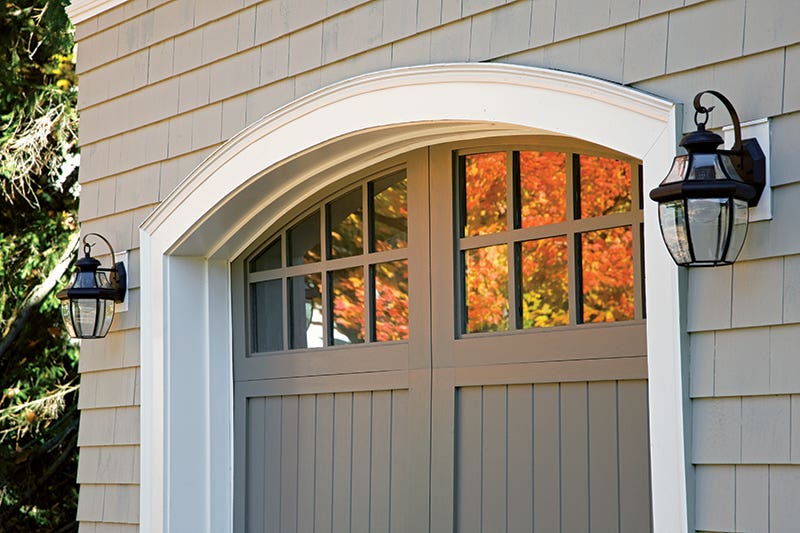
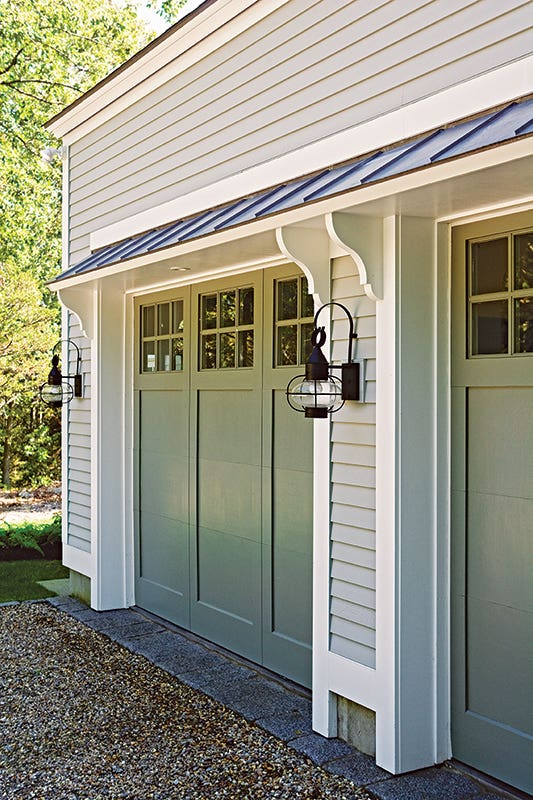
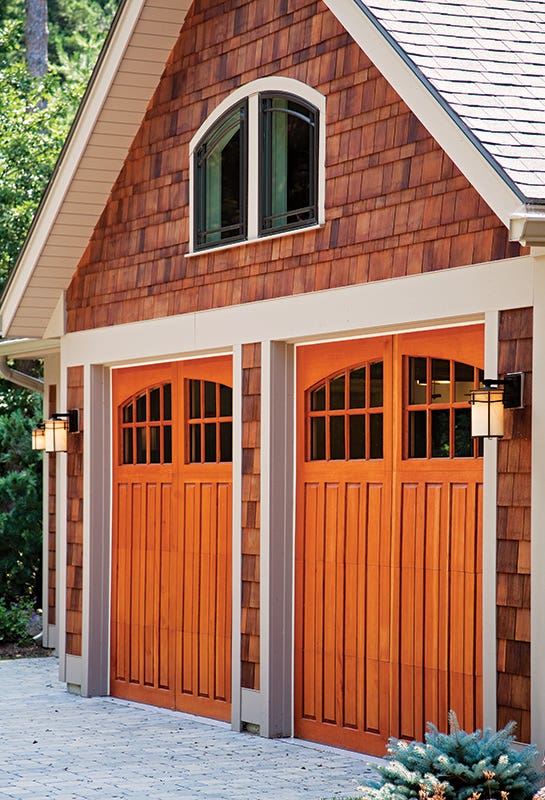
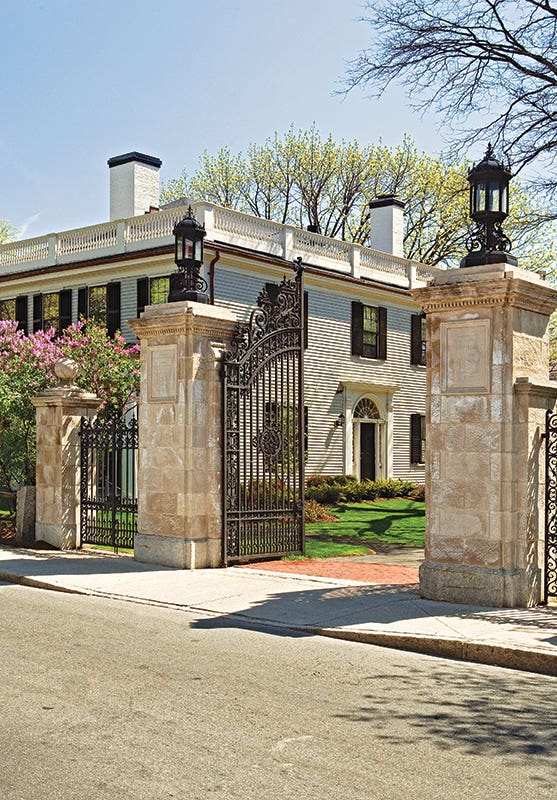
From Whence Colonial?
Though design motifs from the 18th century have cycled in and out of American architecture for well over 100 years, for exterior lighting Colonial seems to have found new turf and admirers in the post-Woodstock decade.
According to Doreen Joslow at Scofield Historic Lighting in Ivorytown, Connecticut, “The beginnings of Scofield are really the Colonial period—sconces and chandeliers—when fuel sources would have been candles or whale oil.” Richard Scofield, who started the business in 1974, would look for originals at Sotheby’s and Christie’s, buy what he liked, and reproduce it exactly. “This was just about the time of the Bicentennial when everything was Colonial, Colonial, Colonial,” she says. “Early on, he went to the living history museums of Sturbridge Village and Deerfield in Massachusetts, as well as Colonial Williamsburg, and got permission to copy some of their original pieces for them in exchange for a reproduction license.” She adds, “He would always want to have the original, because that’s where you see all of the detail, and then the proportions are exact.”
At Deep Landing Workshop in Chestertown, Maryland, John Ramsey was on a similar trail at a similar time. “I started back in 1977, but my dad actually began the business in the 1960s,” he says. “He basically went around to places such as nearby Colonial Williamsburg; all his designs are based in the Colonial era.” Adds Ramsey, “Sturbridge Village has a whole building devoted to historic lighting, a great museum that’s a gold mine."
More than Colonial Revival architecture in general, the enduring appeal of early lanterns and sconces for exterior lighting is not only their resurgence of popularity in the 1970s, but also the way their allure resonates beyond any antique ambiance, even in the high-tech 21st century. “If Colonial lighting is popular now, it’s because of its simple design elements that will go with almost any period,” says Ramsey, “especially when stripped down to a “Shaker” level, which is what we tend to do.” As an example he describes interior chandeliers. “We keep them pretty simple—just arms and a basic center. We don’t throw in the crystals and leaves seen in some Williamsburg designs.”
Joslow agrees. “I think good proportion and quality don’t go out of style.” As she explains, “You might not expect to see Colonial lighting fixtures in a contemporary home, yet there are many people who live in a contemporary home but are kind of traditional in everything else—with antique furniture for example. So they might choose one of our pieces to warm up the starkness of that contemporary-style house.”
What is it then about Colonial lighting design that is so timeless? “Because it was basically built out of necessity from fairly inexpensive materials that disintegrated over time,” explains Ramsey, “there really isn’t much that has survived from the Colonial period. What we have in the historical record—which is not a lot—as far as the designs go.”
No doubt, though, original function is a major driver. “The shape and the design really starts with the type of fuel,” says Joslow. For example, candle-lit sconces had to have room and air circulation enough for one or more tubes to hold the tallow and wicks. Bases of later fixtures might originally have been oil fonts, and tops had to be vented in some way to exhaust gasses and heat as well as protect the open flame outdoors. “I think the basic lantern bodies or chandelier shapes probably evolved with user needs and taste,” says Ramsey, while specific features like venting and gables that are pretty ubiquitous derive from the needs of the fuel, the search for more light output, and the practical limitations of putting lines and curves of sheet metal together. “It has to be a mixture,” he says.
For exterior lighting especially, the glass—or lack thereof—became a defining factor. Until well into the Colonial period, glass was an expensive, imported material, rare at first in windows (and then only in small, diamond-shaped piece called quarrels) and often too dear for lighting. Lanterns might even be glazed with translucent materials such as thin sheets of mica or animal horn. Part of the beauty then of Colonial lighting is in the ratio of materials. “There’s heft to the lighting of that early period,” says Joslow. “There’s more metal to glass—primarily metal— because glass was a very precious commodity and so light came through very small openings.”
When glass was used, it was a long time before it had the clarity of today’s precision-manufactured float glass. “That’s why we offer hand-blown restoration glass as an option, because it has imperfections,” says Joslow, “so when the light passes through, it comes out a little bit distorted, which is lovely, instead of being so perfect that you don’t see it.” Ramsey notes, “Some people get very possessive about design, but in this industry that’s almost impossible because everybody’s working off of the historical record, using the same base references.” He adds, “What defines the difference between various manufacturers is the quality of our work, how we put it together.”
Colonial Lighting's Clientele
Who buys Colonial lighting then? Not necessarily a stickler for 18th century accuracy, but some general history helps. “For example, my house is Colonial style and built in 1836,” says Joslow, “so, most likely, I would not want to use an exterior light fixture from a period after the house. However, I could draw from before the period of the house because, way back when, there weren’t so many options and people used things that worked, that were tried-and-true.”
Says, Ramsey, “We’re a custom shop, and our clients, who are primarily architects and designers, are not necessarily concerned with exact period fixtures. They’re looking for something compatible. I’ve done very few exact reproductions.” He describes an architect client for whom he builds a lot of exterior sconces based upon Federal lanterns. “We have three or four designs that are very compatible that they tend to use over and over on projects, but they’ll change a few elements or alter the proportions.”
Joslow notes that, “Generally, the architecture or design of the house will call for a certain fixture. Some of the Victorian pieces, or an English gas lantern, are too ornate for a simple cape; nor might you want to put a New England barn lantern on a high-style Georgian house.” She adds though that sometimes a feature on the house becomes a motif. “A mansard roof might suggest something like a French station lantern, because it also has a double-pitch top,” she says. “For example, a turn-of-the-century beach house on the Connecticut shore had Tudor-style leaded glass windows, so we produced the same effect in the lighting.”
“Everything we make is to order,” says Ramsey, “and a lot of our repeat clients come to us because we will change sizes without any arguments or qualms.” However, he says not all companies do not do that. “They stick to the same patterns because it costs money to deviate.” Joslow concurs. “We can do exact replications, but if the client doesn’t want the fixture to be absolutely like the original, we have multiple sizes of a lot of fixtures; not every one is the original size.” She says they do a lot of custom commissions but most of the time they’re based off of an existing design. “It’s more about proportion and the need to up-size (our clients rarely need to downsize a fixture). But when we change the size, we do it proportionally—unless the client wants something custom, in which case they can design what they want.”
That is not to say that historically faithful designs don’t benefit from a tweak here and there. “People have done things like change glass,” says Joslow, who describes a project where they took a fixture that was actually an English box sconce and adapted it with acid-edged glass and leaded copper body for use as passage lanterns between some condos in Florida. Then too it’s sometimes not practical—or even safe—to use authentic materials or details in modern electrical lighting. For example, Ramsey recalls making some lanterns based upon an English horn lantern from the 18th century. “For lenses, the horn lantern used cow horn, which was boiled to make it a little more translucent and so it could be shaped to fit a round lantern.” No surprise, cow horn does not make sense today, so Ramsey turned to mica, which can be readily curved, to simulate the semi-transparent animal appearance.
Of course, the demands of a modern, electrified world—not to mention running a business in that world—can sometimes clash with candle-and-whale oil authenticity. “A lot of our fixtures now are meant for a larger market,” says Joslow, “that is, people not just ordering one unit, but doing the whole house and yard with multiple fixtures.” She says that even though all her products are still handmade, there is little room for the one-piece-at-a-time handicraft of preindustrial, colonial production. “When somebody orders ten of one design, they don’t want round finials on one unit, pointed finials on another, or a different height in the chimney font, or different sizes.” Before lighting was electrified, little variations by the craftsman really didn’t matter. “Back then you would just hang the lantern on a hook or to plop the light on a post, but now they have to be uniform—even for collars that slip over a post—because today there are standards.”
Gordon Bock is a writer, architectural historian, technical consultant and lecturer, as well as co-author of the forthcoming book The Vintage House.
Gordon Bock, co-author of The Vintage House (www.vintagehousebook.com), is an in-demand speaker for courses, seminars, and keynote addresses through www.gordonbock.com.

